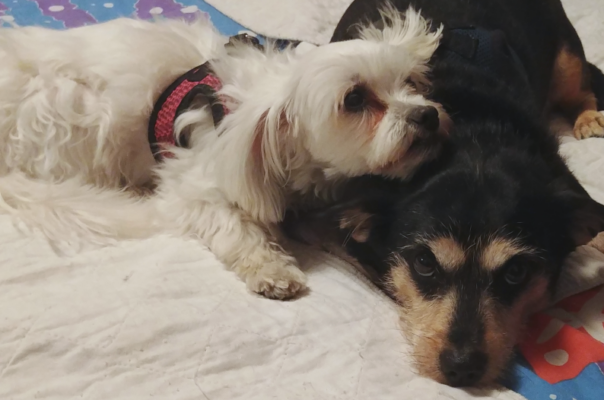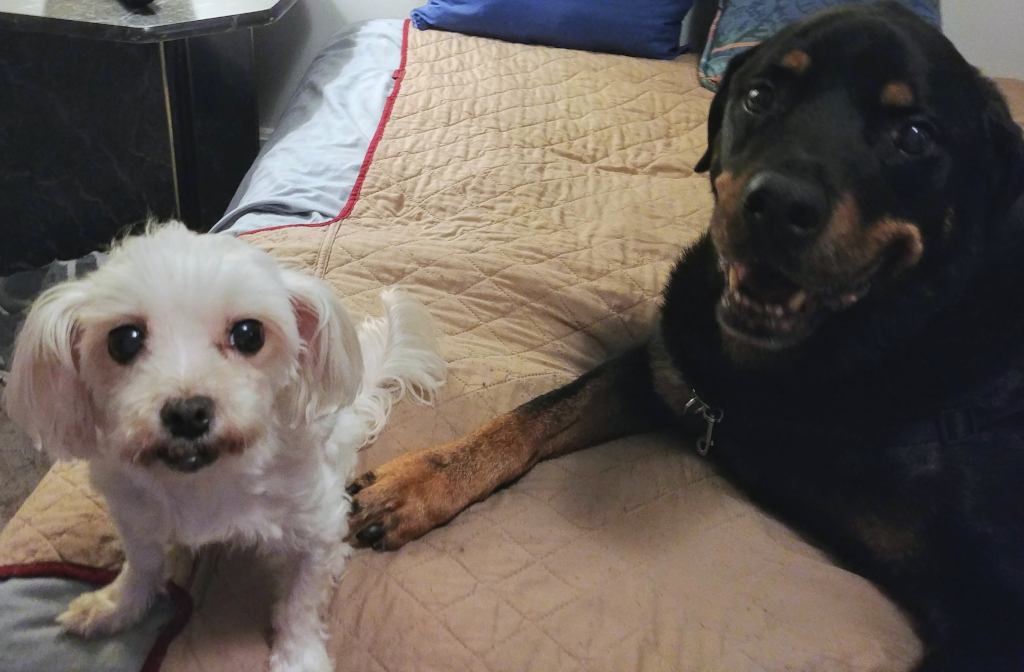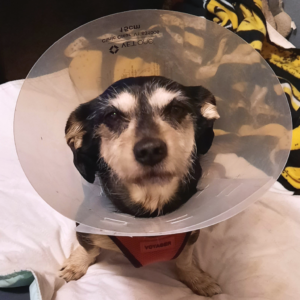 The golden years of our canine companions bring special joys and challenges. That once-energetic puppy who chased tennis balls for hours now prefers longer naps in sunbeams, and the dog who easily bounded up stairs might now take them more cautiously.
The golden years of our canine companions bring special joys and challenges. That once-energetic puppy who chased tennis balls for hours now prefers longer naps in sunbeams, and the dog who easily bounded up stairs might now take them more cautiously.
While these changes are normal parts of aging, distinguishing between typical senior dog behavior and genuine health concerns requires a more nuanced understanding of your aging friend.
The Changing Behavior of Senior Dogs
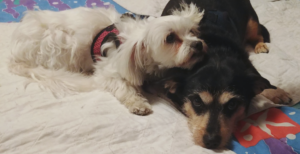 Senior dogs often undergo subtle shifts in their social behavior that can provide important clues about their well-being. Your once-enthusiastic greeter who raced to the door might become more selective about expending energy, while dogs who previously enjoyed family gatherings might seek quieter corners during busy times. These changes don’t necessarily indicate a problem—just as many humans become more selective about their social engagements with age, dogs too may prefer quality over quantity in their interactions.
Senior dogs often undergo subtle shifts in their social behavior that can provide important clues about their well-being. Your once-enthusiastic greeter who raced to the door might become more selective about expending energy, while dogs who previously enjoyed family gatherings might seek quieter corners during busy times. These changes don’t necessarily indicate a problem—just as many humans become more selective about their social engagements with age, dogs too may prefer quality over quantity in their interactions.
However, more significant behavioral changes warrant closer attention. A senior dog who appears confused in familiar environments, fails to recognize family members, or stares blankly at walls may be experiencing cognitive dysfunction, similar to dementia in humans. This condition affects many older dogs and often manifests through disorientation before other symptoms appear. You might notice your dog becoming trapped behind furniture, forgetting familiar commands, or showing increased anxiety, particularly during evening hours—a phenomenon sometimes called “sundowning.”
Sleep patterns naturally shift as dogs age. While puppies and young adults often sleep deeply but briefly, seniors typically sleep more hours but more lightly. You may notice your older dog napping more frequently throughout the day but seeming restless at night. Moderate changes along these lines are typical, but significant disruptions deserve veterinary attention. A dog who paces relentlessly at night, seems unable to get comfortable, or vocalizes during normal sleeping hours might be experiencing pain or neurological changes that can be addressed with appropriate medical support.
Physical Changes and Mobility Concerns
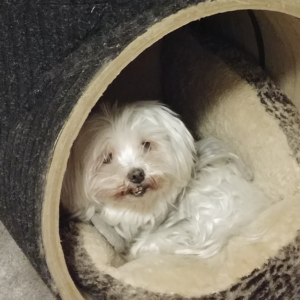 Arthritis affects the majority of senior dogs, though many owners mistake pain-related behaviors for inevitable aging that must simply be endured. In reality, most age-related mobility changes can be improved with proper management. The morning stiffness that gradually improves as your dog moves around, reluctance to climb stairs that were once easily navigated, or hesitation before jumping onto the couch all suggest joint discomfort that merits attention.
Arthritis affects the majority of senior dogs, though many owners mistake pain-related behaviors for inevitable aging that must simply be endured. In reality, most age-related mobility changes can be improved with proper management. The morning stiffness that gradually improves as your dog moves around, reluctance to climb stairs that were once easily navigated, or hesitation before jumping onto the couch all suggest joint discomfort that merits attention.
Many senior dogs develop a characteristic “old dog walk”—a slightly stiffer gait with shorter steps and perhaps a mild sway in the hind end. While some gait changes are normal, pronounced limping, dragging feet, or crossing front legs while walking suggests more significant issues. Early intervention for these problems can dramatically improve your dog’s comfort and prevent muscle loss that occurs when pain limits movement.
Body changes extend beyond movement. The distribution of weight often shifts in older dogs, with muscle mass decreasing along the spine and back legs while the abdomen may appear more rounded. This natural redistribution shouldn’t be confused with obesity, though maintaining proper weight becomes more challenging—and more important—in senior years. Excess weight places additional stress on already vulnerable joints, while significant weight loss might indicate dental problems, digestive issues, or more serious conditions like kidney disease or cancer.
Appetite, Thirst, and Digestive Changes
A senior dog’s relationship with food often changes. Some become more enthusiastic about meals as their senses of smell and taste diminish, seeking stronger flavors or more variety. Others become pickier, sometimes benefiting from warmed food that releases more aroma. Neither pattern necessarily indicates disease, but sudden changes in established eating patterns deserve attention. A dog who has always eagerly anticipated meals but suddenly shows indifference, or a historically finicky eater who begins ravenously consuming everything offered, may be experiencing underlying health changes.
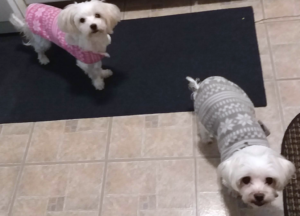 Water consumption provides particular insight into senior health. Increased thirst often serves as an early warning sign of conditions like kidney disease, diabetes, or certain medications’ side effects. You might notice your dog’s water bowl emptying more quickly, more frequent trips to the water dish, or increased bathroom breaks. Since gradual changes can be difficult to perceive, periodically measuring your senior dog’s water intake can establish a baseline for comparison.
Water consumption provides particular insight into senior health. Increased thirst often serves as an early warning sign of conditions like kidney disease, diabetes, or certain medications’ side effects. You might notice your dog’s water bowl emptying more quickly, more frequent trips to the water dish, or increased bathroom breaks. Since gradual changes can be difficult to perceive, periodically measuring your senior dog’s water intake can establish a baseline for comparison.
Bathroom habits also often shift with age. Many senior dogs need more frequent outdoor breaks as bladder control diminishes. The occasional accident in a previously reliable house-trained dog shouldn’t cause alarm, particularly if it occurs during sleep. However, straining during urination, producing very small amounts despite frequent attempts, or showing signs of discomfort during elimination warrants prompt veterinary evaluation, as urinary tract infections and prostate issues become more common in aging dogs.
Respiratory and Heart Health
Breathing changes in senior dogs should never be dismissed. The slightly increased panting after moderate exercise might simply reflect reduced stamina, but labored breathing, wheezing, or persistent coughing suggests potential heart or lung issues. Senior dogs commonly develop a soft, honking cough caused by tracheal changes or heart enlargement pressing on airways. While not always an emergency, these symptoms should be evaluated soon, as early intervention for cardiac and respiratory conditions can significantly improve outcomes.
Similarly, reduced exercise tolerance might initially appear as simple aging—your dog may lag behind on walks or need more rest breaks during play. However, significant changes in stamina, especially when accompanied by excessive panting, weakness, or an unwillingness to move, could indicate cardiopulmonary problems that benefit from medical management.
When Home Care Suffices and When to Seek Help
Understanding which symptoms can be safely monitored at home and which require professional intervention helps prevent both unnecessary veterinary visits and dangerous delays in treatment. Occasional stiffness that resolves with gentle movement, temporary decreases in appetite during hot weather, or slightly reduced energy after unusual exertion typically respond well to supportive home care and monitoring.
 For these minor issues, ensure your senior dog has easy access to water, comfortable resting areas with good traction, and appropriate pain management if already prescribed. Keeping a simple journal of symptoms can help identify patterns and provide valuable information should veterinary care become necessary.
For these minor issues, ensure your senior dog has easy access to water, comfortable resting areas with good traction, and appropriate pain management if already prescribed. Keeping a simple journal of symptoms can help identify patterns and provide valuable information should veterinary care become necessary.
In contrast, certain symptoms should always trigger prompt professional evaluation. Difficulty breathing, collapse or seizures, inability to stand or walk, persistent vomiting or diarrhea, and signs of pain unrelieved by rest all require immediate attention. Similarly, a bloated, hard abdomen with signs of discomfort could indicate gastric dilatation-volvulus (GDV), a life-threatening emergency requiring surgical intervention.
Preventive Care and Quality of Life
As your dog ages, the approach to veterinary care shifts from the primarily preventive focus of younger years to a balance of prevention, early intervention, and comfort measures. Many veterinarians recommend bi-annual examinations for senior dogs, allowing subtle changes to be detected and addressed before they impact quality of life. Regular blood work can identify internal changes before visible symptoms develop, while baseline cognitive assessments help track mental changes over time.
Home management plays an equally important role in senior dog wellness. Simple adaptations like non-slip flooring, elevated food and water dishes, ramps for furniture access, and orthopedic bedding can dramatically improve daily comfort. Moderate, regular exercise helps maintain muscle mass and joint flexibility, though activities may need modification—swimming or shorter, more frequent walks often replace the longer hikes of younger years.
Understanding End-of-Life Care
 Perhaps the most challenging aspect of senior dog care involves making decisions about end-of-life issues. Having thoughtful conversations with your veterinarian before crisis situations arise can help prepare you for this difficult journey. Understanding the likely progression of your dog’s specific conditions, recognizing signs that might indicate suffering versus manageable discomfort, and exploring palliative care options can help you make informed choices when the time comes.
Perhaps the most challenging aspect of senior dog care involves making decisions about end-of-life issues. Having thoughtful conversations with your veterinarian before crisis situations arise can help prepare you for this difficult journey. Understanding the likely progression of your dog’s specific conditions, recognizing signs that might indicate suffering versus manageable discomfort, and exploring palliative care options can help you make informed choices when the time comes.
Many owners find it helpful to establish personal quality-of-life criteria—activities or experiences that define their dog’s essential joy. Whether it’s greeting family members, enjoying favorite treats, or simply finding comfort in daily routines, these markers can guide difficult decisions when health declines. Remember that your veterinarian can provide valuable guidance but cannot make these deeply personal choices for you.
A Rewarding Journey
Caring for a senior dog brings unique challenges but also deep rewards. The relationship developed through years of companionship often reaches its richest expression during this final chapter. Your attentiveness to subtle changes, willingness to adapt to your dog’s changing needs, and commitment to maintaining comfort will make these golden years a meaningful conclusion to your shared journey.
By understanding the difference between normal aging and concerning symptoms, you can ensure your senior dog receives appropriate care without unnecessary intervention. This balanced approach honors both the dignity of the aging process and the special bond you share with your canine companion.


